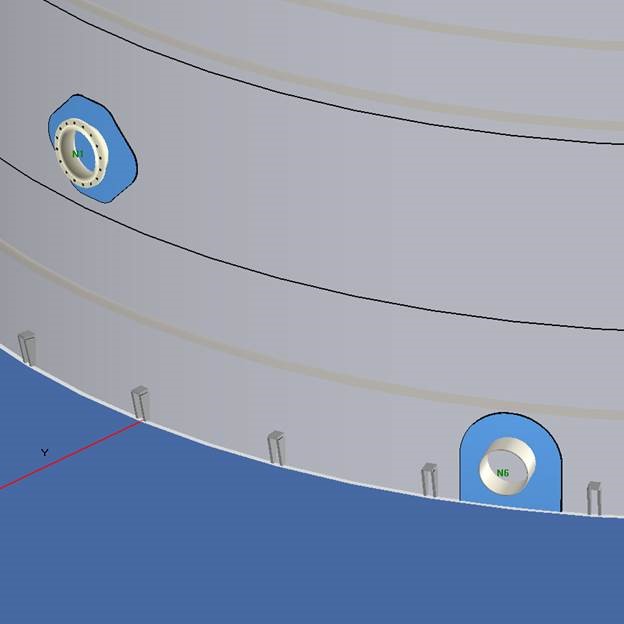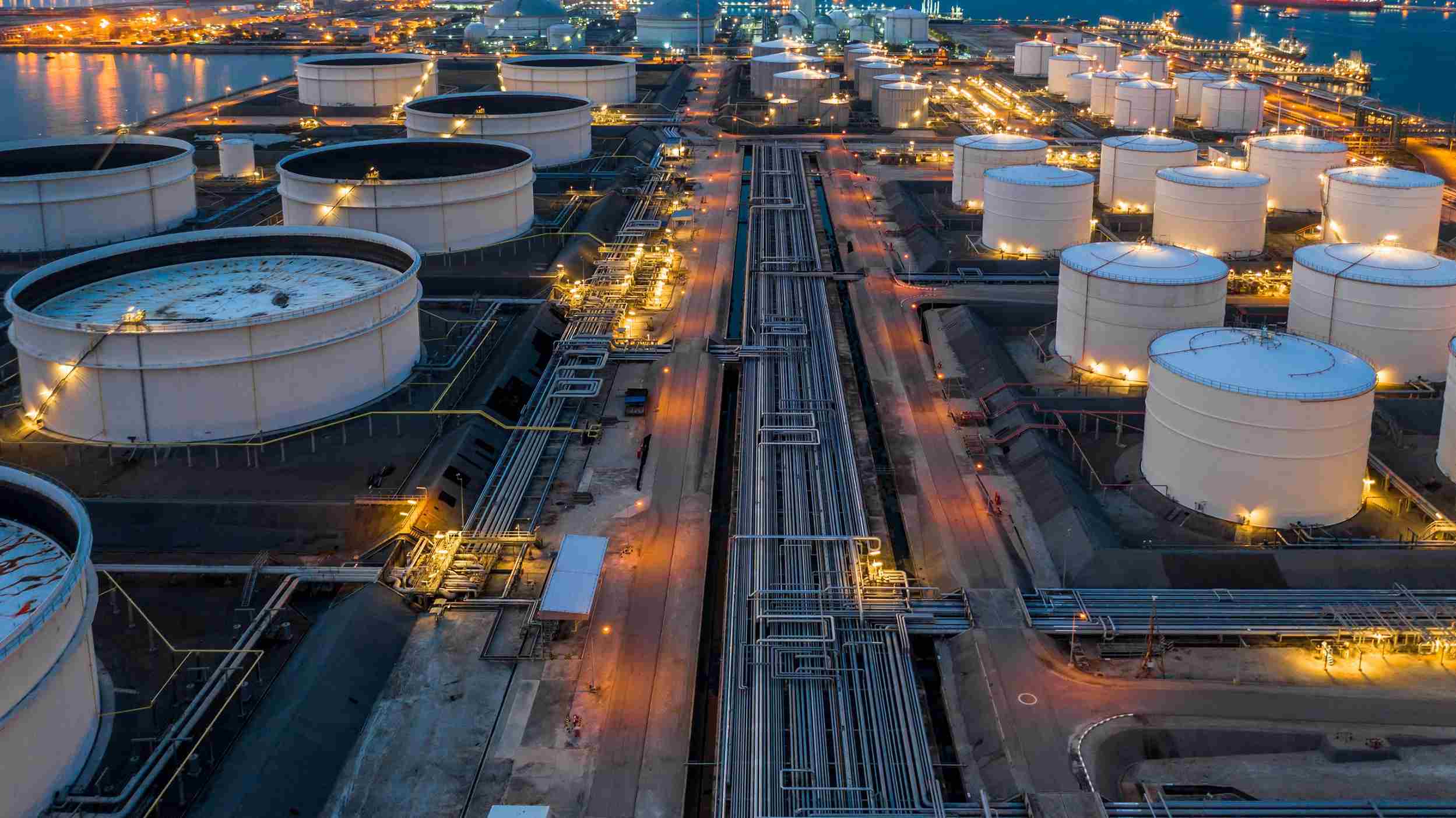Comprehending the Value of Welding Assessment in Top Quality Guarantee Processes
Welding evaluation is an important element of quality control in building and production. It ensures that welds follow established standards, which is essential for architectural integrity. Various inspection methods, from aesthetic to ultrasonic testing, assistance recognize problems early. This aggressive method not only avoids costly repair services but likewise boosts security. Understanding the nuances of welding examination can reveal its wider effects for sector conformity and online reputation. API 650 Welding Inspection. What lies below the surface area of these methods?
The Duty of Welding Assessment in Quality Control
While welding is an important procedure in various markets, its quality and integrity hinge substantially on effective assessment practices. Welding assessment offers as a protect, making sure that welds meet recognized requirements and specs. This process not just identifies issues but likewise assesses the total handiwork, consequently adding to the safety and longevity of bonded structures. Examinations are essential to top quality assurance, as they help avoid expensive failures and keep compliance with market policies. By employing knowledgeable inspectors, organizations can enhance their functional efficiency and promote their credibilities. Furthermore, the insights gained from assessments can educate continual enhancement, resulting in much better methods and training for welders. Eventually, welding evaluation functions as a crucial link in the quality control chain, making certain that every joint is qualified and reliable of holding up against the roughness of its intended application. This persistance is crucial for the honesty of infrastructure and the safety of end individuals.
Sorts Of Welding Inspections
Welding inspections encompass a variety of approaches made to evaluate the quality and stability of welds. These inspections are crucial in ensuring compliance with sector requirements and specs. Typical types of welding examinations include visual inspection, which enables prompt identification of surface area irregularities; ultrasonic screening, which utilizes high-frequency acoustic waves to find inner imperfections; and radiographic screening, employing X-rays or gamma rays to expose weld stability beneath the surface area (API 650 Welding Inspection). Furthermore, magnetic fragment testing is used to identify surface and near-surface interruptions in ferromagnetic materials, while color penetrant screening offers a method for revealing surface-breaking flaws. Each kind of examination offers a certain function, adding to the total quality guarantee procedure. By using a combination of these strategies, examiners can provide a comprehensive assessment of welding quality, ultimately making sure the safety and integrity of bonded structures
Typical Flaws Discovered in Welding
A selection of usual flaws can occur during the welding procedure, influencing the stability and performance of bonded frameworks. These flaws include porosity, which entails caught gas pockets within the weld, deteriorating its toughness. Cracks might also create due to fast cooling or improper joint layout, causing potential failure under stress and anxiety. Insufficient combination occurs when there is not enough melting of the base steel, resulting in weak bonds. An additional problem, damaging, involves the removal of base steel along the weld edge, creating a considerable architectural weakness. Additionally, too much spatter can influence the look and demand additional cleansing or repair. Imbalance can lead to uneven weld beads, endangering the overall top quality. Determining these flaws early via correct examination methods is necessary to ensure the dependability and safety of bonded elements, inevitably securing the efficiency of the whole framework.

Advantages of Normal Welding Inspections
Routine inspections play a substantial role in maintaining the high quality and safety of bonded frameworks, especially in light of the typical issues previously laid out. These evaluations offer a possibility to determine and rectify concerns prior to they escalate right into severe problems, guaranteeing architectural stability. By spotting problems early, companies can lessen repair prices and avoid prospective project delays.
Additionally, regular welding examinations boost compliance with market criteria and regulations, fostering count on among stakeholders. This adherence not only safeguards the company's credibility but likewise contributes to enhanced safety and security for workers and the public.
Furthermore, constant evaluations facilitate far better training and ability development for welders, as comments from assessments can lead improvements. Ultimately, the advantages of routine welding examinations prolong past instant quality control, promoting long-term operational effectiveness and reliability in welded structures.
Ideal Practices for Effective Welding Inspection
Applying best practices in welding examination is vital for assuring the highest possible requirements of quality and safety and security. Examiners have to be adequately educated and certified, having a complete understanding of welding techniques and materials. Making use of sophisticated examination innovations, such as ultrasonic screening and radiography, improves the detection of problems that may not be visible to the naked eye. Developing a clear inspection strategy, describing the standards and regularity visit here of evaluations, warranties consistency and thoroughness.

Recording all findings meticulously is vital for traceability and liability. Regular calibration of evaluation devices ensures precision, while preserving a tidy and orderly work area lowers the risk of contamination. Additionally, promoting open interaction amongst group members helps with the sharing of understandings and advertises a culture of high quality. By adhering to these ideal methods, companies can significantly boost their welding quality control click this site processes, eventually resulting in much safer and more reputable items.

Often Asked Inquiries
What Qualifications Are Needed for a Welding Assessor?
A welding examiner normally requires qualification from acknowledged organizations, such as the American Welding Culture (AWS) or the International Institute of Welding (IIW), in addition to pertinent experience and understanding in welding processes and high quality standards.
How Usually Should Welding Inspections Be Done?
Welding assessments must be carried out frequently, commonly at various job phases, consisting of prior to, during, and after welding procedures - API 650 Welding Inspection. The regularity typically depends on project specs, regulatory needs, and the intricacy of the welds included
What Are the Expenses Connected With Welding Examinations?
The prices related to welding evaluations differ commonly, generally ranging from a couple of hundred to a number of thousand bucks, relying on elements like examination kind, task dimension, and area, influencing total task budgets and timelines.
Can Welding Inspections Be Carried Out Remotely?
Yes, welding evaluations can be performed from another location using advanced modern technologies such as drones, cams, and ultrasonic testing. These approaches allow inspectors to evaluate weld honesty without being literally existing, improving performance and safety in different atmospheres.
Just How Do Evaluation Results Effect Project Timelines?
Evaluation results can considerably influence job timelines by identifying defects early, bring about required rework or modifications. Hold-ups may take place if inspections reveal concerns calling for resolution, eventually impacting total task completion and spending plan adherence.
Welding evaluations incorporate an array of techniques made to evaluate the quality and stability of welds. Usual types of welding evaluations consist of visual evaluation, which permits for prompt recognition of surface area abnormalities; ultrasonic testing, which makes use of high-frequency audio waves to identify inner problems; and radiographic testing, employing X-rays or gamma rays to reveal weld integrity underneath the surface. Regular assessments assist in better training and ability advancement for welders, as feedback from inspections can direct enhancements. Executing best methods in welding inspection is vital for ensuring the highest requirements of high quality and security. Welding evaluations need to be carried out routinely, generally at numerous special info task phases, consisting of before, during, and after welding procedures.